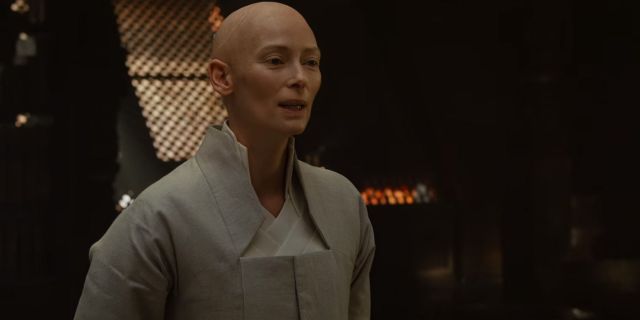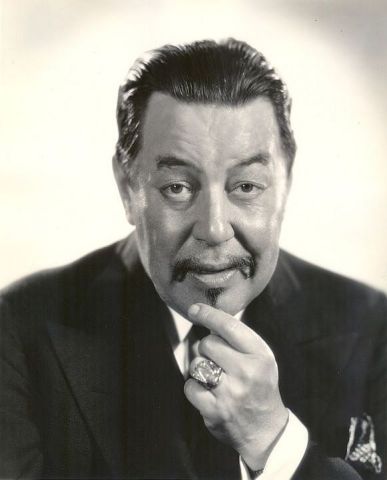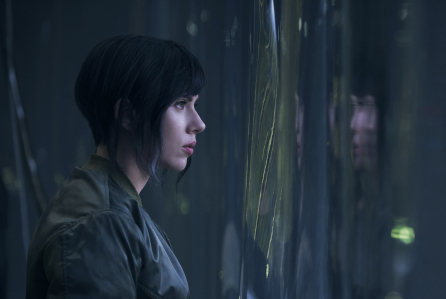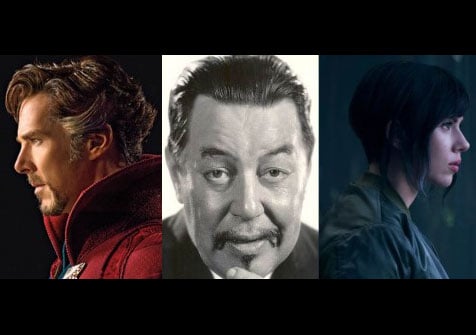Hollywood has no idea what to do with Asian people. And, given the fact that Hollywood often serves as a reflection of contemporary culture, this is a major problem. Aside from casting us as goofy comic relief (Long Duk Dong, really) or evil mystical ninjas (come on, Daredevil season 2), they just don’t know what to do with us. The confusion and ignorance around what we bring to the table sometimes gets so bad that rather than try and find out who we actually are, they’ll overwrite us with white characters, erasing us completely from narratives that inherently belong to one culture or another (looking at you, Ghost in the Shell). Sometimes, to bridge that gap, they’ll even try to use yellowface, which (if you somehow weren’t already aware) is the practice of donning makeup and a really racist accent to look and sound Asian.
These hideously xenophobic implications at play in Hollywood’s insistence on erasing Asian people from their own narratives refers to some incredibly deep-seated, historical prejudices that were widely held back when Hollywood was still forming its identity. Consider Orientalism: popularized as a theory by Edward Said in 1978, it references a historic tradition of “othering,” which set the East far apart from the West in some of the most negative ways. Eastern beliefs, practices, and religions became “mystical, magical, mysterious,” really emphasizing the differences between the East and the West, pushing them further and further apart rather than trying to encourage connection and understanding.
You can see some of these ideas at play in Marvel’s upcoming movie, Doctor Strange, which is a story focused on a white man (Stephen Strange, played by Benedict Cumberbatch) who goes on what amounts to a “magical, mystical journey” through a vaguely “Eastern country” to learn martial arts and mental powers from… well, a white woman. Originally written in the comics as a Tibetan mystic, the Ancient One who trains Doctor Strange is played by Tilda Swinton in the forthcoming flick. The movie presents Eastern religions as mysterious, “magical,” something that’s wildly different that exists only to be understood and mastered by a white person.

(via Marvel Studios)
Orientalism, at its core, was a justification for imperialism, painting Eastern cultures as undeveloped and somehow “lesser than” Western culture. Thus, it became the duty of the “culturally advanced” West to maintain their colonies in other countries; they became justified in their occupation and domination over other countries.
Casting this cultural divide in such a negative light essentially planted some incredibly xenophobic sentiments within Western culture, most notably within the United States of America. It was easy to buy into this simplistic, racist, stereotypical, monolithic image of “an Asian person” as a buck-toothed, smiling, obedient person. Rather than try to explore the full breadth of Eastern cultures, many people found it much simpler to think of everyone as belonging to a singular cultural identity; Chinese, Japanese, Korean, Filipino, Vietnamese, etc. were all suddenly just Asian people. As well, Middle Eastern people also suffer from similar cultural clumping, even to this very day. Not only were these beliefs damaging, they were downright destructive, and nothing short of distressing in how long-lasting they have proven to be.
Now, in a lot of ways, Hollywood exists as a reflection of culture in America. The success of certain films over others reflects the generalized interest of an entire population. So consider, then, the set of films based on the Chinese detective, Charlie Chan. At first, this novel-based character was created to directly oppose the trope of the evil, mystical Asian person; he was a detective for the Honolulu police, an actual hero people can appreciate. Unfortunately, the character didn’t exactly survive the jump from page to screen fully intact. He was, at first, portrayed by many East Asian actors, drawing little to no response from audiences. But as soon as those actors were replaced with Swedish actor Warner Oland (wearing yellowface, no less), the films blew up in popularity.

(via Charlie Chan Family)
Oland played Chan in fifteen films, then was replaced by American Sidney Toler who made twenty-two. After Toler came Roland Winters, another American actor who went on to create six Chan films. This legacy reads like an incredibly racist version of James Bond, with multiple actors taking on the same role, perpetuating many of the same racist values inherent in the practice of yellowface. The film’s performance reflects America’s view: when an East Asian actor plays a heroic Chinese character, audiences don’t respond; for whatever reason, it just doesn’t sell. But the moment you replace that person with a white actor in makeup, it’s like gangbusters. It feels as if audiences weren’t willing to believe that an actual Asian person can be a hero. They’d still rather see themselves in racist makeup than buy into someone so “different” playing a good guy.
Make no mistake: I used the past tense in those last few sentences, but this is still a problem that persists to this very day. True, yellowface is a little more rare these days. But yellowface has been replaced by another incredibly insidious practice: erasure. Consider the film that’s been on everyone’s radar as of late: Ghost in the Shell. Scarlett Johansson, while an incredible actress and someone who undoubtedly rocks many action roles, stands as a bit of a symbol of Hollywood’s (and, again, the general populace’s) inability–or perhaps unwillingness–to fully grasp the depth of the source material’s Japanese roots.

(via Deadline)
Placing a white actress into a story that does not belong to her eliminates those themes. It washes away the things that make the story what it is. It is important to note, however, that according to recent interviews with Kodansha, the Japanese publishing company that oversaw Ghost in the Shell‘s republication post-movie deal, they’re okay with Johansson’s casting. Speaking with The Hollywood Reporter, Sam Yoshiba, head of the international business division at Kodansha, said, “Looking at her career so far, I think Scarlett Johansson is well-cast. She has the cyberpunk feel. And we never imagined it would be a Japanese actress in the first place.”
One wonders if Yoshiba’s (and, by extension, Kodansha’s) sentiments negate the backlash that’s arisen since the announcement. While it may help the production company feel justified in their decision, it still doesn’t eliminate the fact that Ghost in the Shell is, at its core, a Japanese story. As many writers have said in the past, Ghost in the Shell is a story that’s deeply rooted in Japan’s history. Jon Tsuei, co-creator of RUNLOVEKILL, explained in a series of tweets that the story revolves around a theme central to Japan’s identity at the time of the manga’s creation: their relationship with technology with regards to its identity as a world power. The manga, created in 1985, came at a time when Japan was considered the world leader in tech. They sank all of their post-war funding into their economy, focusing almost exclusively on developing technology. Thus, Japan had an incredibly unique relationship to technology, one that will never be replicated elsewhere. Ghost in the Shell was an exploration of this unique relationship. That, according to writers and fans like Tsuei, is what makes it a Japanese story, one that deserves the right actress in the role.
This constant devaluing of Asian cultures is a devastating practice that Hollywood can’t ever seem to stop doing. When Hollywood’s not propping up Orientalist portrayals of Eastern cultures (hi, Doctor Strange), it’s taking their most valued stories and appropriating them for an audience who are complicit in their unwillingness to get just how damaging the film industry can be.
The thing to remember is that Johansson’s casting doesn’t exist in a vacuum. It is not something new. Given Hollywood’s long-standing problem record with Asian stories and roles, it measures up to be just the latest in a set of punches delivered to a thoroughly beaten horse. Simply put: people are tired of having their stories taken away from them and given to other people. They are tired of watching Hollywood try to emulate them to incredibly disappointing results (hi, Dragonball Evolution). There are scores of actors and actresses who rightfully know that they’re more than just an Asian sidekick.
Hollywood has absolutely no idea what to do with Asian people. It never had any idea what to do with Asian people. But perhaps more than the whitewashing arguments, more than the horrendous use of CGI yellowface, there is a problem with the way Hollywood portrays Eastern stories. Rather than letting them be owned by the people who created them, there is this deeply-rooted racist insistence upon appropriating these beliefs, religions, cultural touchstones in order to change them to center upon the Western experience within these already rich, beautiful stories. Taking something that inherently belongs to someone else is theft, and it is my belief that this extends to stories, as well. And when you take something from someone who already has less than what you might possess, it just becomes that much more awful.
You see, Ghost in the Shell, Dragonball Evolution, Doctor Strange… these are all just the latest in a long, long line of appropriation of Eastern culture and stories. This practice has roots dating as far back as Hollywood’s inception, but I don’t believe it has to stay that way. Change can come, and it can start with a real simple one: let us own our own stories, please. You’d be surprised to see how far that may get you.
—The Mary Sue has a strict comment policy that forbids, but is not limited to, personal insults toward anyone, hate speech, and trolling.—
Follow The Mary Sue on Twitter, Facebook, Tumblr, Pinterest, & Google+.








